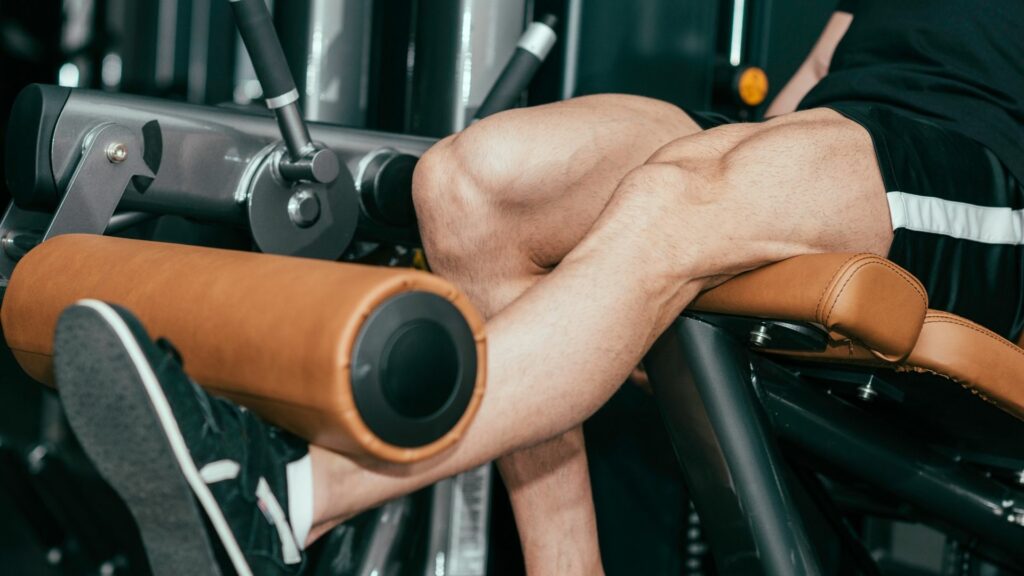Eccentric training for more strength and muscles

When we describe a person as eccentric, it usually has a negative connotation. Therefore, these are people we prefer to avoid. Even in strength training, most athletes emphasize the concentric phase than the eccentric phase. But it is eccentric training that we should not avoid:
What is eccentric training?
Sports science also refers to the eccentric phase of a strength exercise as the negative phase. This phase of a repetition in which the muscle fibers increase in length. In the case of the squat, this is the phase of descent. However, even many strength athletes still focus on the concentric phase. Mainly probably because the body plays a trick on them. During the concentric phase, the tension of the target muscles is much more noticeable. That’s why you want to save energy in the eccentric phase so that you can use the power for the concentric phase. But that’s not how it works.

Both movement phases are important
If you want to get the most out of your strength training, you should focus equally on the concentric and eccentric phases. What’s more, it even makes sense to focus on specific eccentric training every now and then. This is especially true for athletes who aim for strength and muscle growth. I’ll introduce you to 3 eccentric training techniques in the following sections. To maximize your training results, you should incorporate them into your strength training.
Eccentric training and muscle growth
Although it may feel different in many strength exercises, the eccentric phase produces the most significant effect when repeating a workout. Research shows that the forces generated are 20 to 60 percent higher in the eccentric phase than in the concentric phase. And even though the concentric phase triggers a hypertrophy stimulus, this is significantly higher in the eccentric phase. Physiologically, this also makes sense. Studies have shown that muscle fibers’ simultaneous tensing and stretching trigger precisely the kind of stress that causes intentional slight muscle damage. Intentional, on the one hand, because this damage is usually harmless. On the other hand, they force the body to form new muscle cells during the regeneration phase.
Both movement phases are important
If you want to get the most out of your strength training, you should focus equally on the concentric and eccentric phases. What’s more, it even makes sense to focus on specific eccentric training every now and then. This is especially true for athletes who aim for strength and muscle growth. I’ll introduce you to 3 eccentric training techniques in the following sections. To maximize your training results, you should incorporate them into your strength training.
Eccentric training and muscle growth
Although it may feel different in many strength exercises, the eccentric phase produces the most significant effect when repeating a workout. Research shows that the forces generated are 20 to 60 percent higher in the eccentric phase than in the concentric phase. And even though the concentric phase triggers a hypertrophy stimulus, this is significantly higher in the eccentric phase. Physiologically, this also makes sense. Studies have shown that muscle fibers’ simultaneous tensing and stretching trigger precisely the kind of stress that causes intentional slight muscle damage. Intentional, on the one hand, because this damage is usually harmless. On the other hand, they force the body to form new muscle cells during the regeneration phase.
Another advantage of eccentric training
In addition, eccentric training has another significant advantage: despite the high muscle force you have to generate, the energy expenditure is comparatively low. This makes concentrating on the eccentric phase extremely attractive. You can work with heavier weights and still not tire as quickly. It’s not yet fully understood, but the hypertrophy induced by eccentric training results from higher muscle tension. Especially the fast-acting muscle fibers (FT-fibers) come into action faster. As a result, they ensure particularly effective thickness growth. Studies have also found that focusing on the eccentric phase is interesting for healthy, ambitious athletes and in the rehab sector. Therefore, it is certainly worth taking a look at the 4 eccentric training methods that now follow:
The 2:1-method
This method performs the concentric phase with two extremities and the eccentric phase with only one extremity. While you can do the concentric phase a little faster, it is advisable to do the eccentric phase slowly and in a controlled manner. Of course, this only works for a few selected exercises, such as the leg extension (see photo), the chest press, the leg press machine, and the leg curl. Ideally, you should do three sets of 5 to 8 repetitions with a set rest of 60 seconds. You should train with 70 percent of your maximum strength.

The two-phase technique
This variation is possible with any multi-joint exercise. You complete the concentric phase at an average pace and then the eccentric phase very slowly. This can last up to five seconds. Tip: Do 3 to 5 sets with 80 to 95 percent of your maximum strength. Take a break of one to two minutes between sets. Attention: The used muscles should burn during the eccentric phase. Make sure you use the correct technique even when you are most fatigued. Since you are working with heavyweights, a partner is advisable for assistance.
Fast eccentric phase
Instead of working with prolonged speeds in the eccentric phase, you can work with significantly faster speeds. You then perform the concentric phase at average speed. This variation is interesting for all athletes who want to train their speed. You exercise with 80 percent of your maximum strength and can do 3 sets of 8 to 12 repetitions. The set breaks are 1 to 2 minutes. If you are already well trained, you can also work with 90 percent of your maximum strength.
1 thought on “Eccentric training for more strength and muscles”